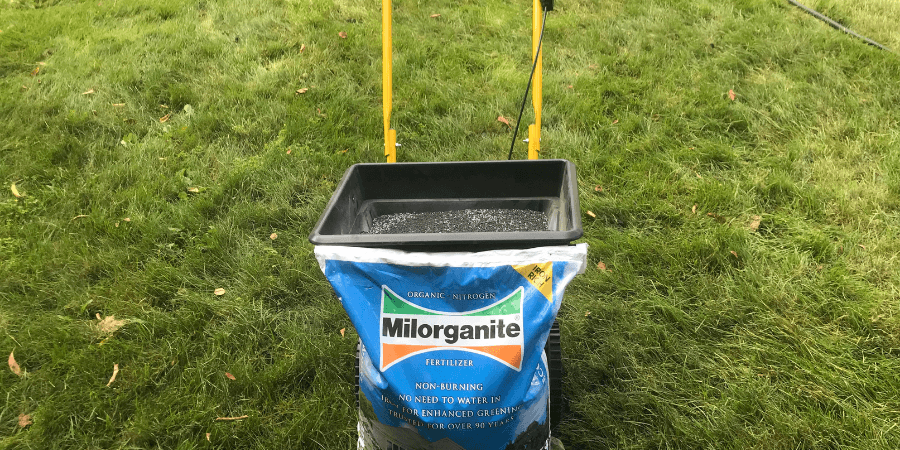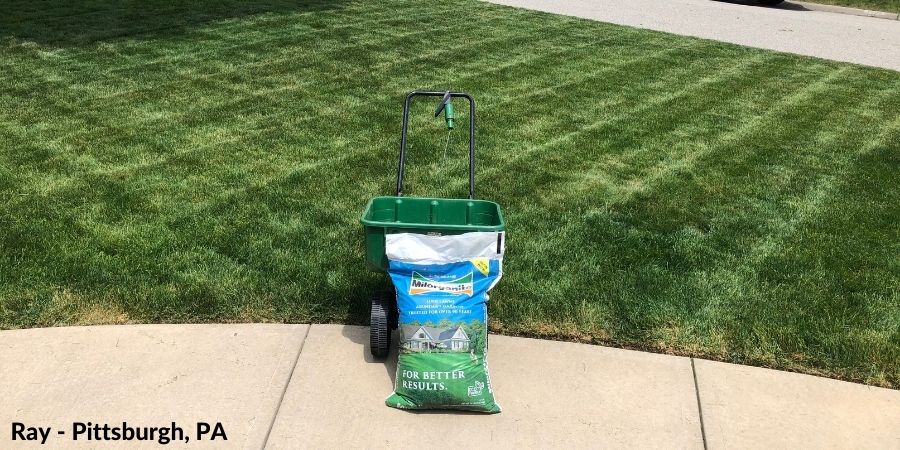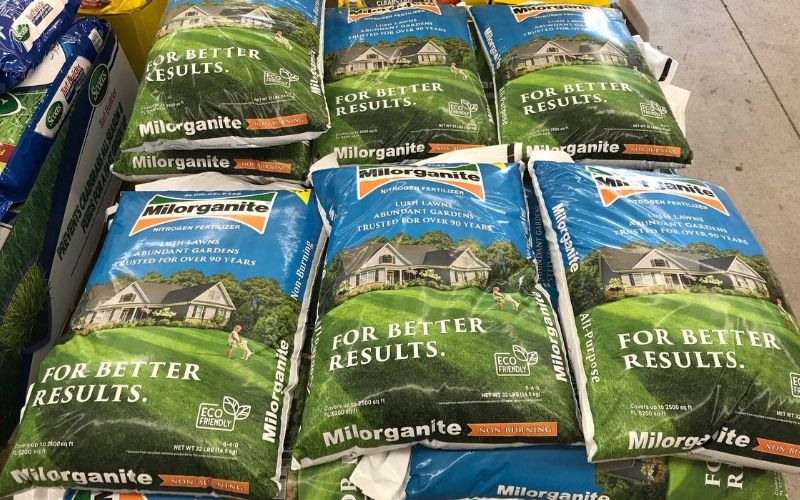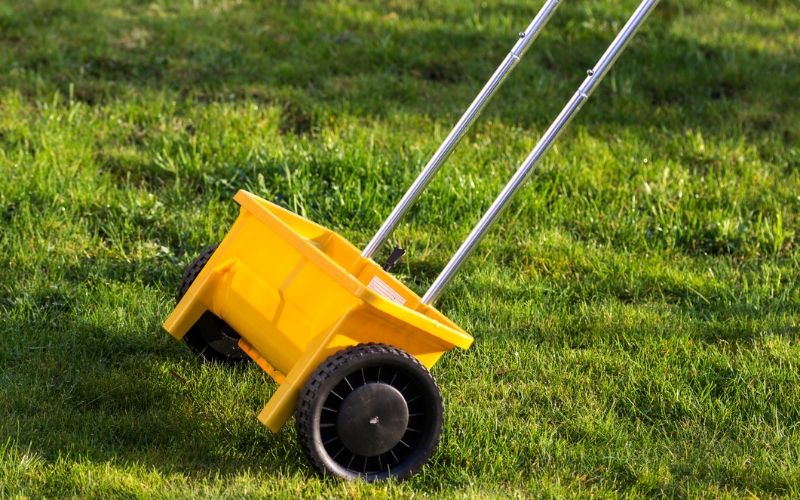What is Milorganite®?
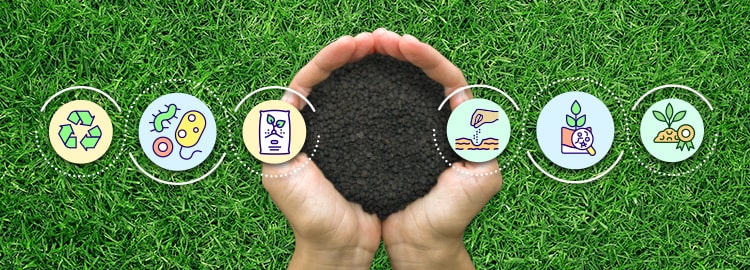
What is in a bag of Milorganite?
Let’s start with what Milorganite isn’t. It is NOT a bag of poop! (Seriously, it’s not.)
It’s a question we’ve heard for decades. There’s an obvious reason for the misunderstanding: Milorganite is the end result of the Milwaukee Metropolitan Sewerage District (MMSD) wastewater treatment process.
Using large-scale processes that mimic nature, microbes (bugs) digest the nutrients found in the water and are kiln-dried into small pellets.
A bag of Milorganite is composed of heat-dried microbes that have digested the organic matter in wastewater. So, Milorganite is actually a bag of dried microbes!
How is Milorganite made?
Milorganite is made using one of the nation’s oldest recycling efforts. Instead of recycling plastic and glass, we recycle nutrients.
Wastewater enters the Milwaukee Jones Island water reclamation facility, where all solid materials such as sand, boards, shop rags, plastic, and debris are first removed. Microbes are added to the water—the activation process—and oxygen is bubbled through the water to create the ideal environment for the microbes to digest the nutrients in the water.
The microbes die after they consume all of the nutrients. Binding agents are added to the water causing the microbes to clump together and settle to the bottom of the undisturbed water in sedimentation tanks. After everything has settled, the cleaned water is returned to Lake Michigan, and the microbe clumps are sent on for dewatering and drying.
Moisture is first squeezed out of the clumps using belt presses, resulting in something similar to wet cardboard. The semi-solid material moves on to one of 12 rotary kiln driers heated to 900–1200 ⁰F, which heats the Milorganite to an internal temperature of 176°F. The extreme heat kills pathogens.
Milorganite is analyzed for at least 20 parameters every day to comply with all applicable safety guidelines for protecting human health and the environment. After passing all tests, it’s ready to be packaged and shipped throughout the U.S.A.
The name "Milorganite" is derived from MILwaukee ORGAnic NITrogen. In 1925, McIver and Son of Charleston, South Carolina won the National Fertilizer Magazine contest for their entry.
How Does Milorganite Work?
Your Plants Require Three Elements to Flourish: Sunlight, Water, and Nutrients.
Sunlight is necessary for photosynthesis, which produces chlorophyll, the element that gives plants their green color. Plant roots absorb water and nutrients from the soil to keep the plant healthy and strong. Water carries chlorophyll throughout the plant and helps plants absorb nutrients.
Milorganite Releases Nutrients as Plants Need Them
Milorganite’s slow-release nutrients are available as plants need them. There’s no immediate, excessive release of nutrients after fertilizing, which causes a flush of growth.
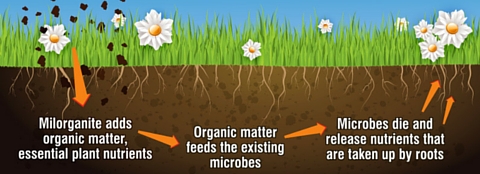
At least 80% of the nitrogen in Milorganite is water insoluble (slow-release) and is delivered to the roots through microbial activity in the soil, but the conditions need to be right. Microbial activity occurs when soil moisture is adequate and soil temperatures are 55–85 F. The microbes break down the nutrients from Milorganite making them available to plants. When conditions aren’t favorable, Milorganite’s nutrients stay right where they are until there’s enough water and the temperature is within range.
Slow-release nutrients, like those in Milorganite, are gradually available for up to 10 weeks, which means fewer applications. This extended feeding provides more uniform growth, a deeper and better-established root system, and a healthier lawn and garden. Slow-release nutrients are also better for the environment because the nutrients are less likely to leach into waterways.
Milorganite® Reviews
Share your Milorganite lawn, garden, or landscape, and we'll send you a shirt, hat, or rain gauge. We appreciate your support!
Connect with us on social media to see your beautiful lawns and gardens.
Milorganite Articles
Milorganite Videos
Lawn Care Tips
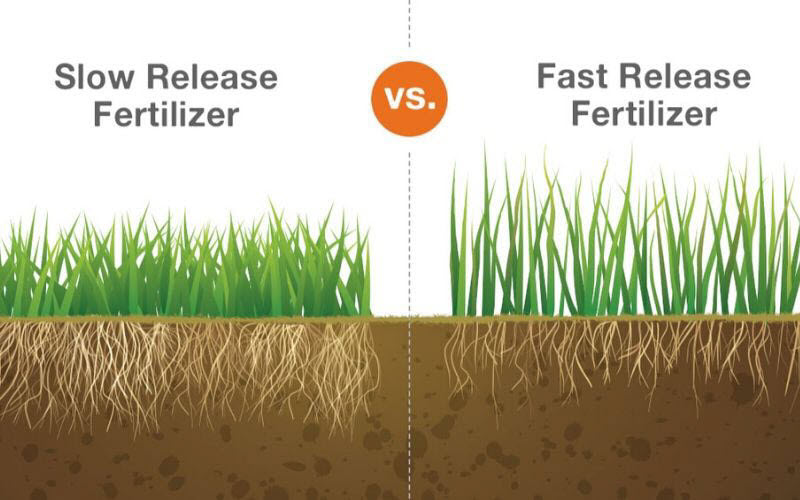
Organic vs. Synthetic Fertilizer
Learn the differences and benefits of organic and synthetic fertilizers.

